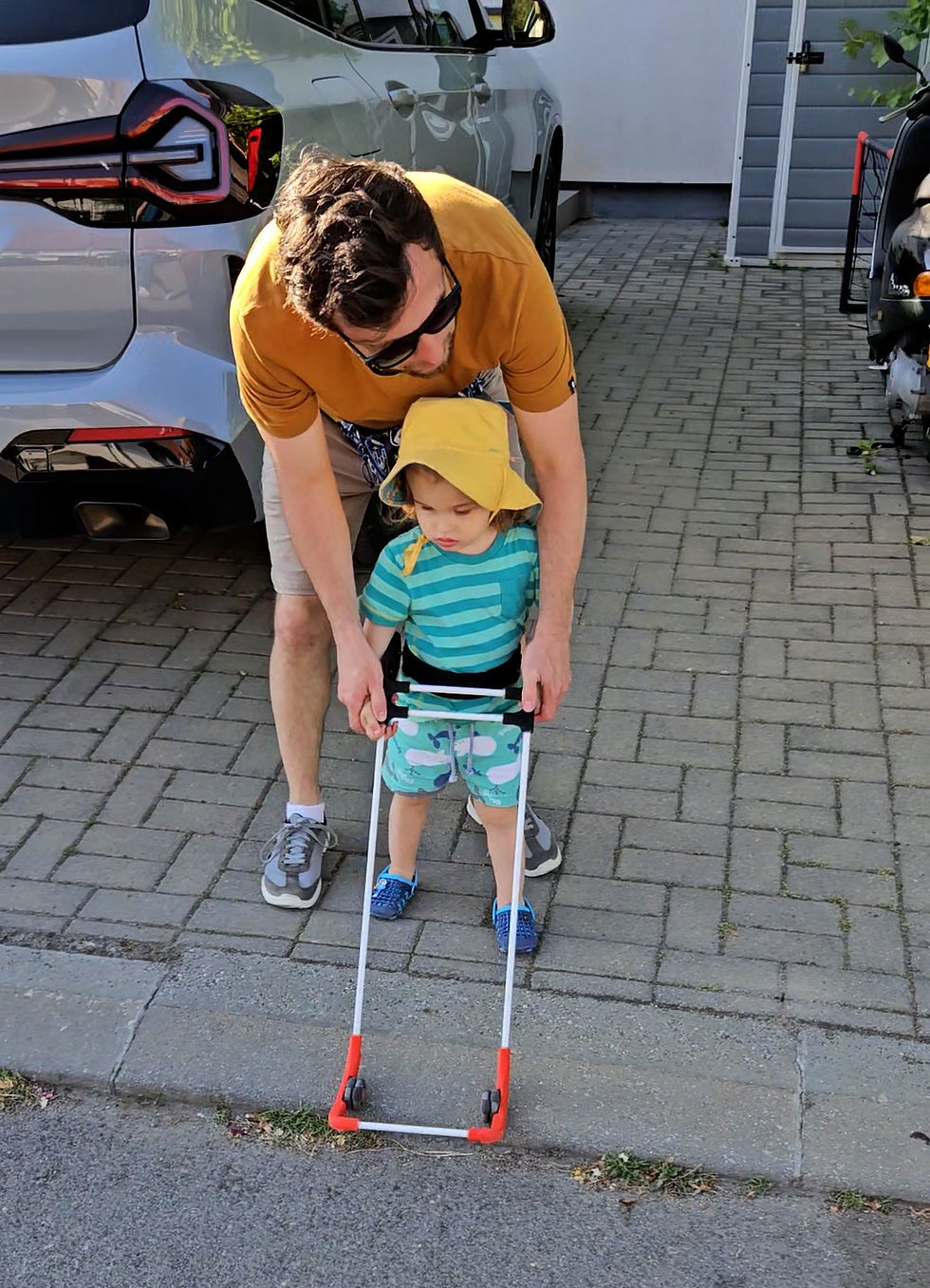All children need reliable path information to thrive
- Grace Ambrose-Zaken

- Oct 29, 2019
- 3 min read
Updated: Jun 16, 2024
In the dark, sighted people experience temporary mobility visual impairment or blindness (MVI/B). MVI/B means you cannot use your vision to avoid obstacles in the path ahead. When this is the case, you are at risk for injury. MVI/B identifies learners who must use a mobility tool for safety when walking and running.
Professionals who teach orientation and mobility (O&M) skills to people who are severely visually impaired or blind are often in the same meeting as professionals who provide mobility therapy (e.g., physical therapists, occupational therapists). There are important distinctions between the mobility goals of these professionals.
People with MVI/B may avoid needing a PT or OT; by using mobility tools everywhere they walk and run. Physical therapists (PT) may be called on to consult on cases of children aged five and younger who are visually impaired because they have a mobility injury or because they have difficulty achieving gross motor milestones, like walking with age appropriate pace and posture across open space.
PTs and OTs do not provide mobility tools to their patients. They do not prescribe or teach white canes in any form, unless they have the additional O&M credential. O&M specialists teach learners with MVI/B how to use specific mobility tools for safe mobility.
Learners with MVI/B are at risk for gross motor delays and mobility injury when they walk independently without reliable path information. Mobility tools for the blind are like light bulbs for the sighted, because mobility tools provide reliable path information enabling the user to detect obstacles in the path and avoid injury.
The negative impact of MVI/B has on gross motor skills is observable, it looks the same as when sighted people walk for any length of time in the dark (slow, halting gait, defensive arm and body postures). These automatic defenses are meant to be temporary, until the lights are turned on, because while these postures are used to reduce the impact from inevitable collisions, overtime they can cause harm to the body and self-confidence.
Without a mobility tool, people with MVI/B are just steps away from their next collision. Toddlers with MVI/B do not benefit from turning on lights and they are harmed by the inevitable collisions they experience because they cannot see obstacles in their path.
For people who cannot turn on the lights to achieve safe mobility, the answer is O&M.
There are different types of mobility tools used by people with MVI/B for safe mobility; the human guide, the dog guide, the long white cane, a rectangular cane and a wearable pediatric belt cane. With the aid of these path detectors, people with MVI/B no longer crash into obvious obstacles with their bodies, because they can find them first with their tactile warning device or avoid them altogether with their guides.
Wearing their belt canes allows toddlers to achieve gross motor milestones. The term MVI/B identifies the proper course of action for adults responsible for children five and younger. Children five and younger with MVI/B need to wear their pediatric belt canes which provide them reliable, effective tactile path detection.
Children five and younger are too little to use dog guides or long canes. Therefore giving them these mobility tools is the same as offering them no protection at all. A one-year old baby with MVI/B can play with a dog or long cane, but in order to walk with safe mobility they need a reliable source of path information. They need a device that will always be in front of their next step, a wearable pediatric belt cane.
Pediatric belt canes are developmentally appropriate canes for little kids.
Therefore, before treating the consequence of MVI/B with PT or OT, we can prevent the cause of motor injury and milestone delays by providing children five and younger with MVI/B with a way to have anticipatory control when walking.
The pediatric belt cane is an effective device for very young children with MVI/B, because all children need reliable path information to thrive. Children with MVI/B need consistent tactile path information everywhere they go, every day, all day.
Children with MVI/B need consistent tactile path information in the same amount as sighted children need the lights on.








Comments